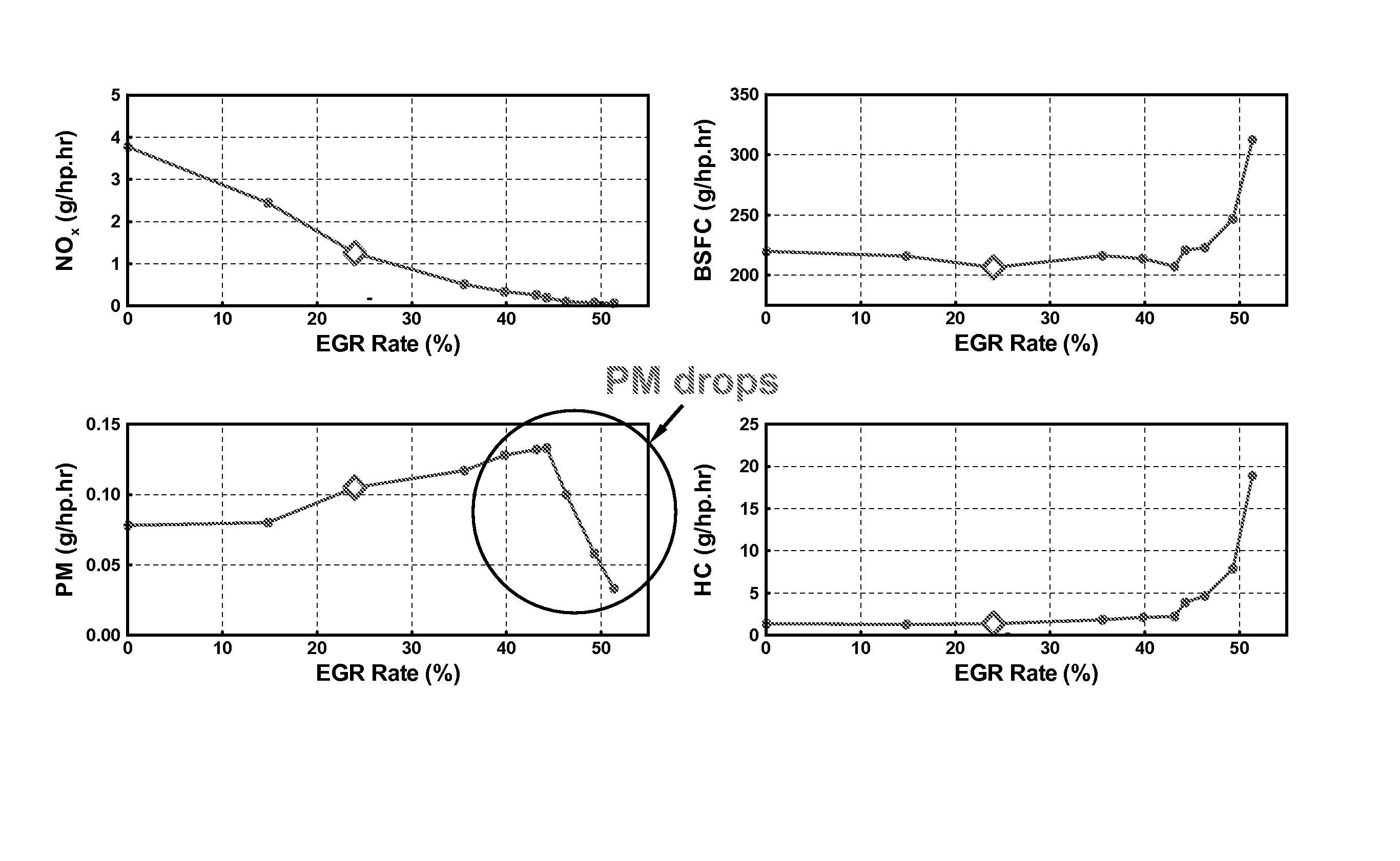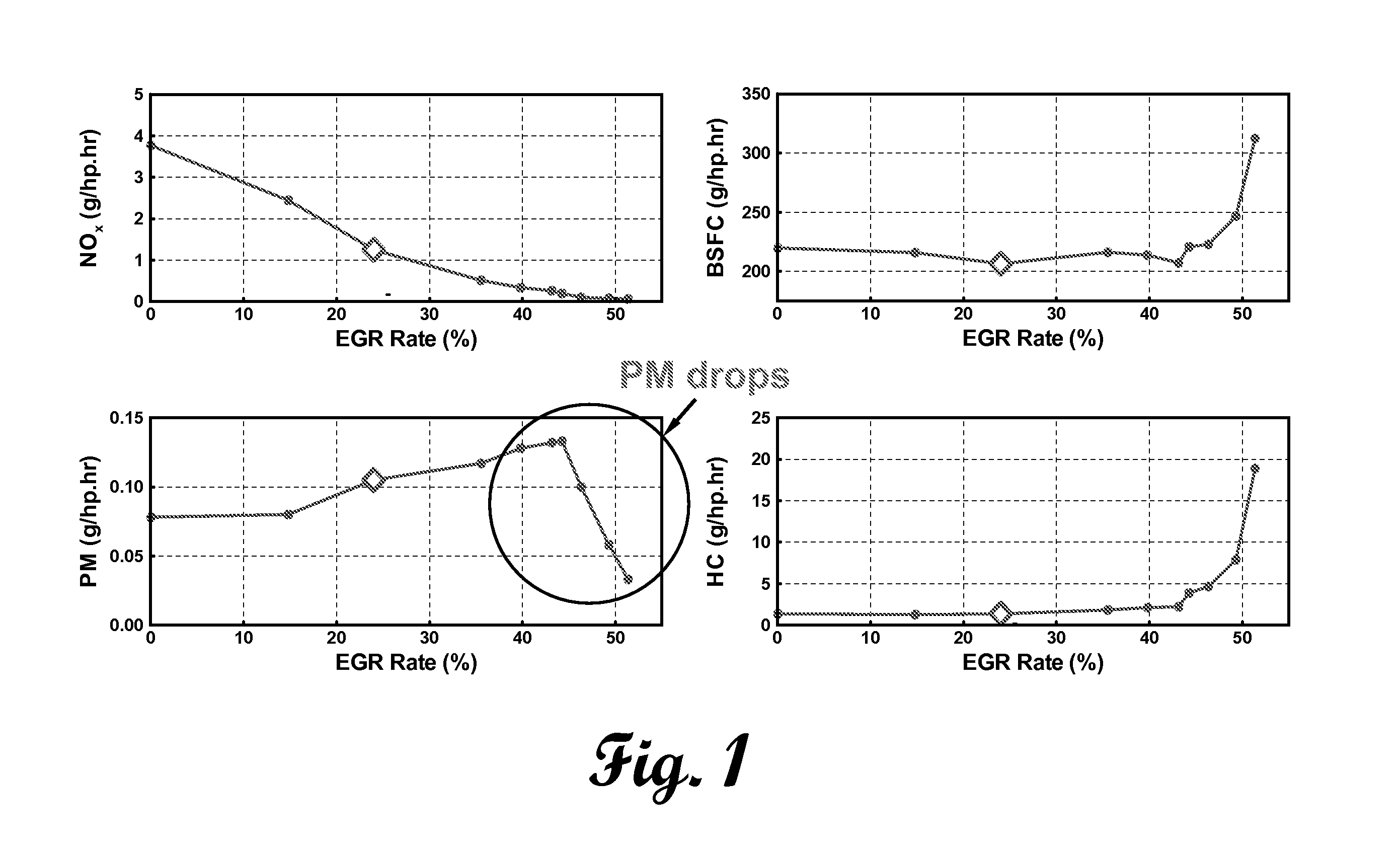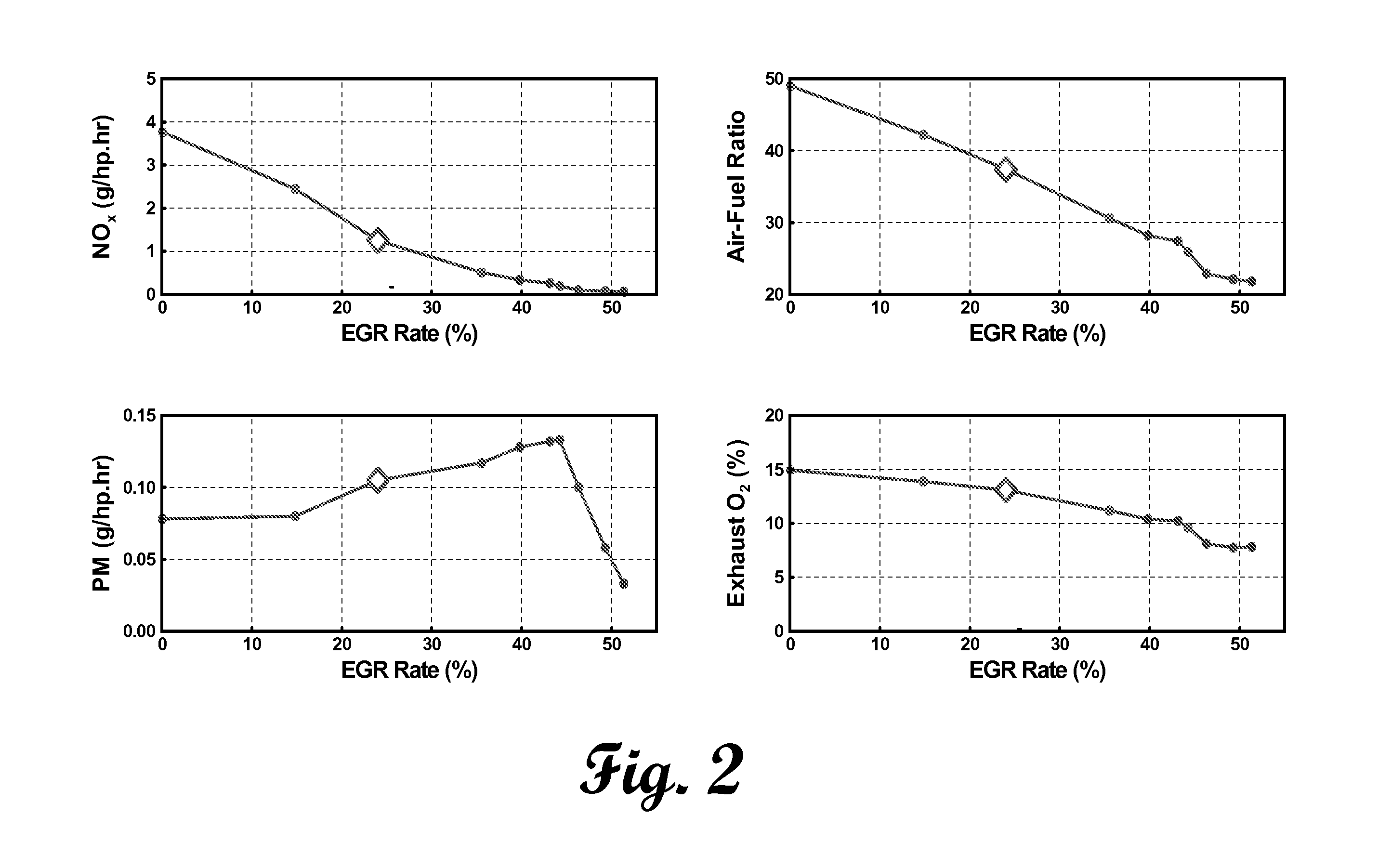Combustion diagnostic for active engine feedback control
a technology of active engine and feedback control, which is applied in the direction of electric control, instruments, specific gravity measurement, etc., can solve the problems of inability to detect and control combustion, inability to reduce flame speed, and inability to reduce combustion. , to achieve the effect of better sense and control of combustion
- Summary
- Abstract
- Description
- Claims
- Application Information
AI Technical Summary
Benefits of technology
Problems solved by technology
Method used
Image
Examples
Embodiment Construction
[0026]First experiments were performed on a 1.9 liter, four-cylinder Volkswagen turbo-charged direct injection engine under steady state, low load conditions. Engine speed was maintained constant at 1200 rpm using an absorbing dynamometer and fuel flow was set to obtain 30% full load at the 0% EGR condition. A system was devised to vary EGR by manually deflecting the EGR diverter valve. The precise EGR level was monitored (on a volume basis) by comparing NOx concentrations in the exhaust and intake. NOx concentrations were used because of the high accuracy of the analyzers at low concentrations found in the intake over a wide range of EGR levels. In typical experiments to date, fuel flow rate and injection timing were maintained constant while EGR was increased. This operating strategy introduces a complication in the analysis because the engine air-to-fuel ratio is decreased with increasing EGR due to the displacement of intake air by recirculated exhaust gases. The effect of this ...
PUM
 Login to View More
Login to View More Abstract
Description
Claims
Application Information
 Login to View More
Login to View More - R&D
- Intellectual Property
- Life Sciences
- Materials
- Tech Scout
- Unparalleled Data Quality
- Higher Quality Content
- 60% Fewer Hallucinations
Browse by: Latest US Patents, China's latest patents, Technical Efficacy Thesaurus, Application Domain, Technology Topic, Popular Technical Reports.
© 2025 PatSnap. All rights reserved.Legal|Privacy policy|Modern Slavery Act Transparency Statement|Sitemap|About US| Contact US: help@patsnap.com



